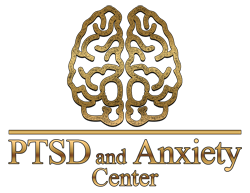Exposure Response Prevention
The exposure component of ERP refers to practicing confronting the thoughts, images, objects, and situations that make you anxious and/or provoke your obsessions. The response prevention part of ERP refers to making a choice not to do a compulsive behavior once the anxiety or obsessions have been “triggered.” All of this is done under the guidance of a therapist at the beginning – though you will eventually learn to do your own ERP exercises to help manage your symptoms. Over time, the treatment will “retrain your brain” to no longer see the object of the obsession as a threat.
Doing ERP is challenging, for sure! But when you do it correctly, the following things happen:
- You will feel an initial increase in anxiety, uncertainty, and obsessional thoughts.
- You will find that these feelings and thoughts are distressing, but also that they can’t hurt you — they are safe and manageable.
- You will find that when you stop fighting the obsessions and anxiety, these feelings will eventually begin to subside.
- This natural drop in anxiety that happens when you stay “exposed” and “prevent” the compulsive “response” is called habituation.
- You will find that your fears are less likely to come true than you thought.
- You will get better at managing “everyday” levels of risk and uncertainty.
A Good Way to Think About OCD and ERP:
Think of anxiety as your body’s alarm system. If your fire alarm goes off, what does it mean? The alarm is there to get your attention and prompt you to take action to protect yourself and your family. But, imagine what would happen if your fire alarm went off every time you burnt a piece of toast or blew out birthday candles? That’s what happens in OCD.
OCD takes over your body’s alarm system so that instead of only warning you of real danger, that alarm system begins to respond to any trigger (no matter how small) as an absolute, terrifying, catastrophic threat.
When your anxiety “goes off” like an alarm system, it communicates information that you are in danger, rather than “pay attention, you might be in danger.”
Unfortunately, with OCD, your brain tells you that you are in danger a lot, even in situations where you “know” that there is a very small likelihood that something bad might happen. This is one of the cruelest parts of this disorder.
Now consider that your compulsive behaviors are your attempts to keep yourself safe when that alarm goes off. What does that mean you are telling your brain when you engage in these behaviors? You are reinforcing the brain’s idea that you must be in danger. Birthday candles are the same as a blazing fire.
In other words, your compulsive behavior fuels that part of your brain that gives out these many unwarranted alarm signals. The bottom line is that in order to reduce your anxiety and your obsessions, you have to make a decision to stop the compulsive behaviors.
However, starting ERP can be a difficult decision to make. It may feel like you are choosing to put yourself in danger. And in the short term, that feels uncomfortable. In the long run, however, you begin to challenge and bring your alarm system (your anxiety) more in line with what is actually happening to you.
How is ERP different from traditional talk therapy (psychotherapy)?
Traditional talk therapy (or psychotherapy) tries to improve a psychological condition by helping you gain “insight” into your problems. Talk therapy can be a very valuable treatment for some disorders, but there is no research evidence.
